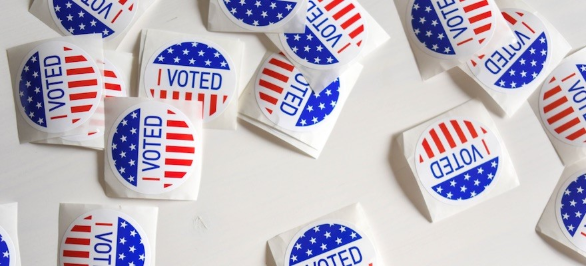Everything you need to know about trading before, during, and after an election

Trading an election can be a very profitable pursuit for the informed trader. Unsurprisingly, political elections are eagerly followed by market participants as they try to position themselves as early as possible for any shifts that may be ahead.
To the uninformed it may seem little more than a coin toss to try and trade the outcome of an election. After all, you may correctly reason, no-one has a crystal ball to gaze into the future with.
However, trading an election is actually more nuanced than simply trying to trade the outcome of the event. In fact, there are at least three key points in any election and all three can offer distinct trading opportunities.
Those opportunities present themselves before, during, and after the election announcement.
Trading before an election
The first tradable aspect of an election is its announcement. This news can be read as either bearish or bullish for the currency and it becomes pretty clear quite quickly what the reaction of the market will be.
A good recent example is when Theresa May, the British Prime Minister, announced a snap election on April 18 2017. The Pound quickly gained in value, breaking overhead daily resistance and finishing the day with a 2%+ rise.
The reason for the Pound's rise was because it was thought that Theresa May would gain a further conservative majority in the House of Commons. This was thought to strengthen the conservatives' hands for any upcoming Brexit negotiations and potential legislation.
The election was due to be held on the 8th of June and the Pound remained bid into the election date. If you had picked up this news early on April 18 during the London session you could have bought and held the Pound for a decent profit. (See chart below).
One of the key aspects to this trade working so effectively was that it was a 'surprise announcement'. The general rule of thumb is this: the greater the surprise, the greater the market reaction.
There is another hidden trade that emerges in the 'before the election' section and that is as influential polls are released. A political poll is viewed as a key indicator for the outcome of any election result, so a shift in the poll numbers will result in a shift in price too.
These polls being announced provide tradable headlines on an intraday basis. A good example of this was seen out of New Zealand in September 2017 just after 0600GMT when New Zealand's national party was reported to have increased its lead over the Labour opposition.
The result was a thirty-point spike that canny traders could have taken advantage of.

Trading the election result
As the 2017 UK election results came in the first exit poll showed an ominous sign: the conservatives had failed to even win a majority, and there was going to be a hung parliament.
As more results came in the exit poll was confirmed and the GBP instantly sold off.Theresa May had miscalculated and could only now form a majority by annexing the DUP party from Northern Ireland.
The market now realized that Brexit negotiations were going to be a lot harder than they were prior to the election. It was an incredible home goal and a move that badly back fired for Theresa May.

It was obvious that the GBP would sell off and you can see in the chart below that as the regional results came in overnight the GBP/USD pair sold off into the next couple of sessions.
Trading the reaction to the election
The other key area for traders to profit from is the market's reaction after the election results have been announced. This was illustrated by the US elections when Donald Trump's US election win was announced in November 2016.
There was an extremely volatile reaction in the USD/JPY. It dropped several hundred points on the announcement initially. This was because it was feared that Trump's presidency would be antagonistic to China and his protectionist policies would produce a riskier global environment.
This was a fear that was partially realized as we now know fast forwarding to the present day. However, as the European session got underway USD/JPY reversed and the USD/JPY pair, which had nearly fallen to 101 at a key daily support level, ended up closing the session at over 105. That was a huge move.
The key driver for the USD/JPY strength had been that the expectations for the Federal Reserve to hike rates had gone from around 40% to over 70%. The market suddenly saw that Trump's corporate tax cuts and US business friendly policies and infrastructure investment would result in a positive US dollar environment.
The price rallied all the way to 118 before taking any sort of a pullback in price. This was a pro-longed move that could have been traded for a few weeks.

Taking necessary precautions when trading an election
Trading an election is definitely a worthwhile pursuit for the forex trader to venture into. However, it should be noted that volatility can be extreme during such times and the use of leverage should be limited due to the heightened risk.
It should be noted though that elections also provide excellent trading opportunities and do not need to be feared. In the USD/JPY example the initial market reaction was reversed as the market digested Trump's win, so you need to be aware that even market expectations can be wrong. Don't marry your positions and keep an open mind and, more importantly, a stop in place.
European Union elections are due shortly in May 2019, so you could perhaps try using some of these strategies outlined in this piece.
This article was submitted by the ADSS Research Team.




